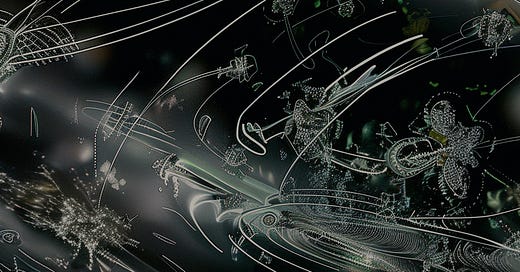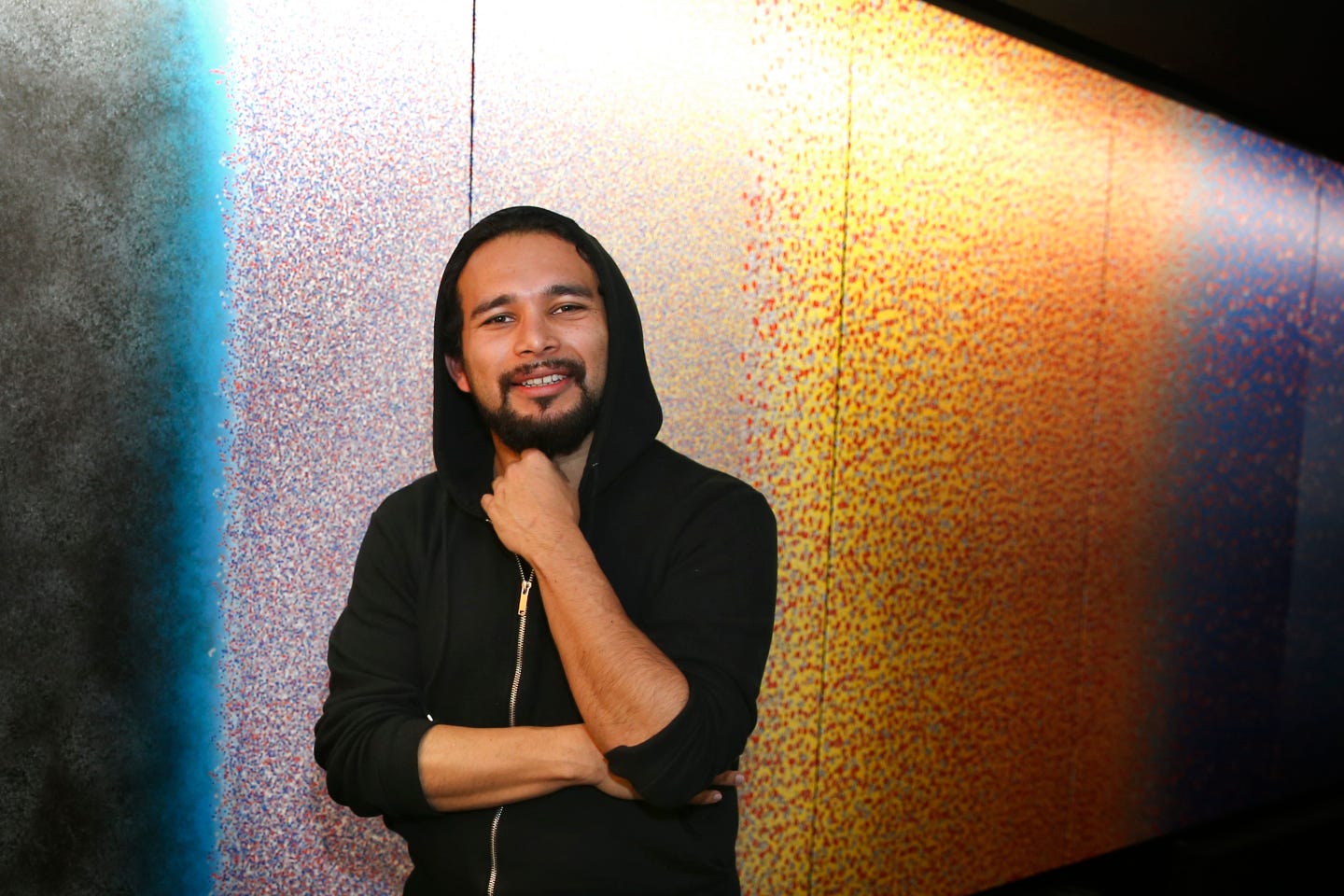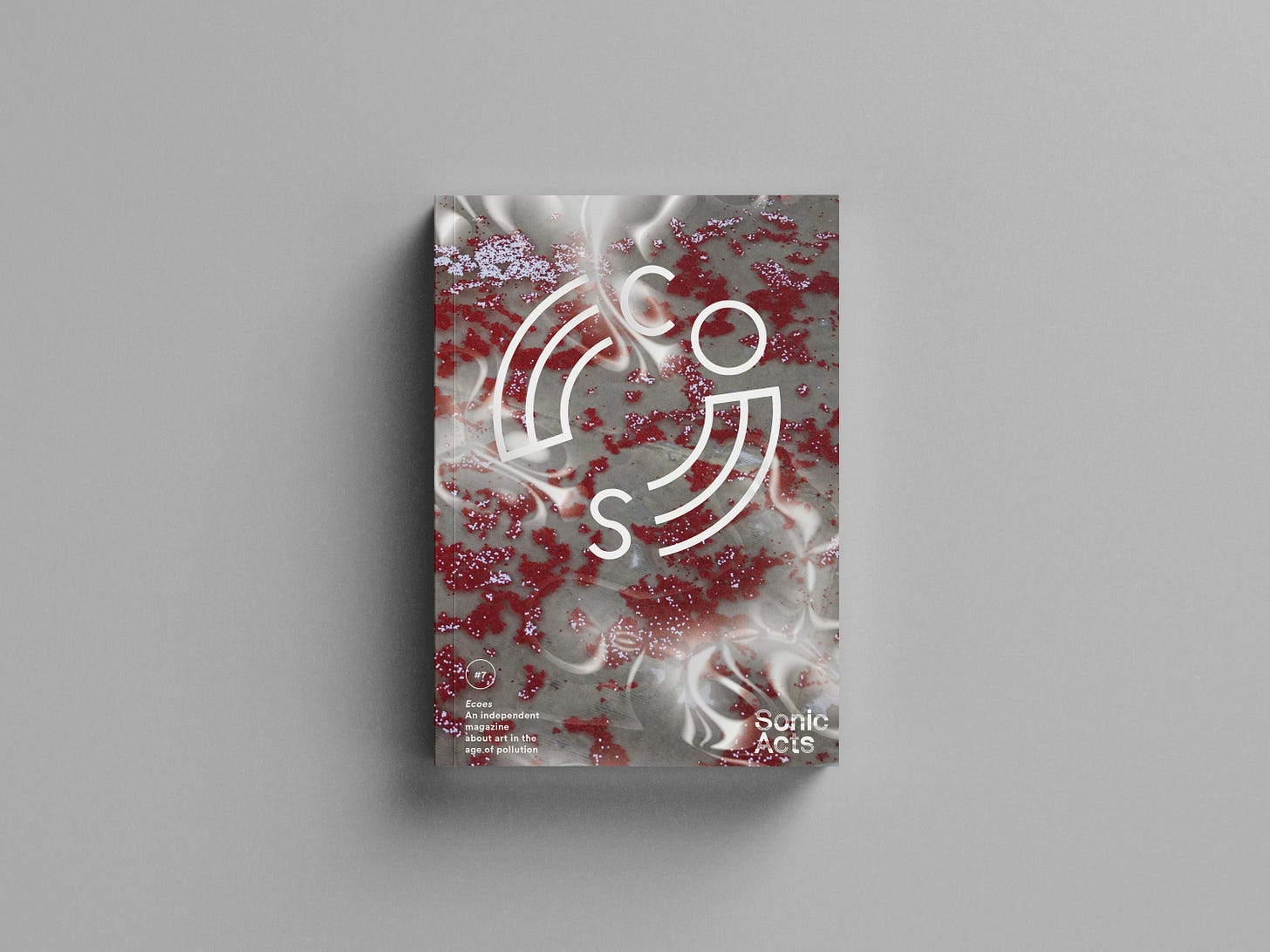Soil acoustics as witness to ecological collapse with Juan Cortés
Through field recordings and data sonification, artist and researcher Juan Cortés explores the impact of techno-colonial agriculture in Colombia.
In early 2024, I was fortunate enough to meet artist and researcher Juan Cortés in Bogotá. I had come to learn about his work with the sound of soil, and in particular a body of work called A Tale of Two Seeds: Sound and Silence in Latin America's Andean Plains.
Using field recording, data sonification and immersive audio-visual storytelling, the work explores how ‘pirate’, transgenic (or genetically modified) seeds and indiscriminate herbicide use have resulted in the degradation of Colombia’s soils and the erosion of its indigenous practices. In linking processes across scales that are otherwise intangible, Cortés’ practice treats sound as a witness to ecological collapse.
Made alongside UK-based studio Semantica (Jemma Foster and Camilla French) and Atractor Estudio (Alejandro Villegas, Juan José López and Juan Quiñonez) in Colombia, A Tale of Two Seeds won the Are Electronica Prize for Digital Musics and Sound Art in 2023.
“Sometimes we need to be able to touch subjects like soil in a different way, to perceive them from a different perspective,” he tells me, outlining creative methods that blur the boundaries between scientific research and investigative journalism. “I do think that sound art – and art in general – can draw lines between ideas that have become disconnected.” Trans-disciplinarity, he explains, is crucial in addressing multifaceted challenges such as environmental degradation, social injustice, and cultural memory.
When I met Cortés again in London a few months later, I was excited to learn that he would be presenting a new work with Semantica called As Above So Below at a forthcoming Somerset House exhibition SOIL: The World At Our Feet. And then, in late 2024, I was commissioned by Sonic Acts to write an article about Cortés’ work for their annual publication Ecoes.
With the Somerset House show now open, what follows is a short section of my interview with Juan Cortés, originally published in Ecoes in January 2025 with the title Sounding out the Subterranean.
A massive thank you to Hannah Pezzack of Sonic Acts for commissioning and editing the feature. Click here to buy a copy of the magazine, which also includes Salomé Voegelin, Shortwave Collective, Charlemagne Palestine, Jacek Smolicki and many more.
I am particularly interested in this idea of sound as a witness to the degradation of the soil. Could expand on this idea of sonic witnessing more generally?
Certainly. Sound holds immense potential as a witness to ecological collapse, particularly regarding subterranean environments where visual observation is limited. Acoustic signals can reveal vital information about biological activity, soil composition, and the presence of fauna. The diminishment or alteration of these sounds can indicate disruptions within the ecosystem that might precede visible signs of degradation.
By employing techniques from acoustic ecology and bioacoustics, we can monitor the health of ecosystems through their soundscapes. For example, changes in the acoustic signatures of soil – such as reduced activity from microorganisms or invertebrates – can signal declining soil health. Sound, therefore, becomes an early detection system, alerting us to ecological disturbances that may not yet be apparent through other means.
And in the context of ecological collapse, sound not only documents change, but also serves as a medium for storytelling and memory. It can capture the loss of biodiversity and the silencing of natural environments, making abstract concepts of environmental degradation more palpable. As the soundscape ecologist Bernie Krause notes, the collective voices of ecosystems – the biophony – are critical indicators of environmental integrity. I think that sound is an amazing way to create not just an emotional, but also a sensory connection to the soil as an organism.

This brings us nicely on to your new commission, As Above So Below, which is presented at Somerset House exhibition, SOIL: The World At Our Feet in London. What can we expect?
This work emerged from a conversation with Semantica. Lately, we've been thinking about how the technification of agriculture, combined with advancements in computational biology, often excludes essential criteria needed to fully understand biological organisms, such as soil.
In South America techno-colonialism appears to be imposing itself as the only viable future. Innovators in the tech industry promise algorithms to enhance efficiency in crop production, despite the unsustainability of such models. The logic of monoculture continues to devastate biodiversity; agricultural frontiers expand, leading to deforestation, and land use becomes increasingly limited, prioritising private investment – especially foreign – over ecological considerations.
Within this context, the commission for Somerset House – As Above So Below – involves replicating a well-known computational model used to simulate soil behaviour, including its chemical changes, and the bacteria, fungi and networks that inhabit and constitute it. However, we introduce a pivotal alteration, connecting the model to an API that tracks the stock market, specifically focusing on companies developing agricultural technology, to incorporate this variable into the simulation. Through this, we pose questions such as: How are the temporal processes of soil affected by the vast influx of new crop accelerators? What impact do herbicides and the primary products of agro-industry have on soil sustainability?
One of the principal focuses of the project is sound. Incorporating sound allows us to translate complex data and ecological transformations into sensory experiences that can be more readily apprehended by the public. By sonifying data related to soil degradation and financial market fluctuations, we aim to reveal the often-invisible entanglements between ecological systems and global economic dynamics.
It seems we are witnessing an unprecedented interest in organisms and systems like mycelium – both in the arts and popular culture – that are challenging to fully comprehend without imaginative responses.
We are governed by so many intangible forces. Our connection to the earth, to fungi, is a way to root ourselves again – not in a ‘hippy’ sense, but as a genuine recognition that we are part of intrinsically interlinked systems. These are our food systems; we depend on them. If we don’t put our hands in the soil, we’re going to be completely screwed.
Ecoes #7 is out now. Order a copy here and find out more about visiting SOIL: The World Beneath our Feet at Somerset House here.







This is incredible work - thank you for giving it a voice